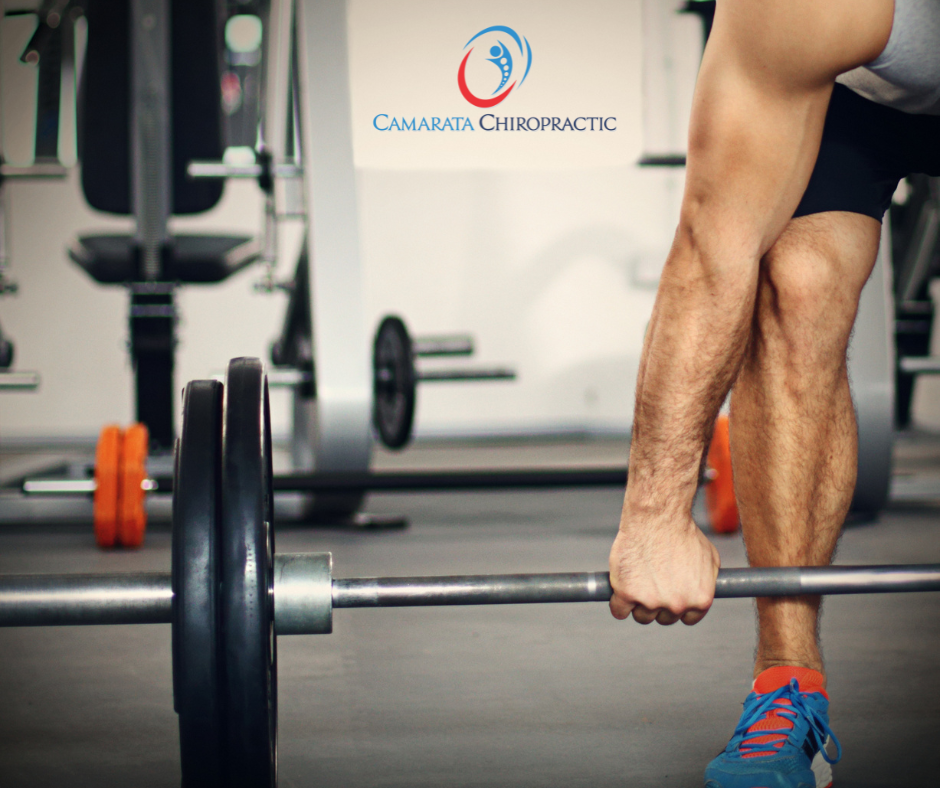Understanding Muscle Contractions for Pain, Posture, Performance & Injury Prevention

Welcome back to our Fitness Friday series! At Camarata Chiropractic & Wellness, we're committed to exploring various facets of wellness to help you achieve and maintain optimal health. Today, we're diving deep into the dynamics of muscle contractions and the undeniable benefits of strength training, especially in addressing muscular imbalances, enhancing posture, managing pain, boosting athletic performance, and preventing injuries.
Understanding Muscle Contractions
Muscle contractions are at the heart of every movement. They're not just about bulking up; they're fundamental to our daily activities and overall well-being.
There are three primary types of muscle contractions:
- Isometric Contractions: In these contractions, the muscle exerts force without changing length. Think of holding a plank position. Isometric exercises are excellent for stability and endurance, offering a foundation for strong posture and pain management.
- Concentric Contractions: This occurs when a muscle shortens as it exerts force, like lifting a dumbbell during a bicep curl. Concentric movements are crucial for building muscle strength and size, essential for improving performance in athletes.
- Eccentric Contractions: Here, the muscle lengthens while under tension, as seen when lowering a dumbbell in a bicep curl. Eccentric training is key to overcoming muscular imbalances and is often used in rehabilitation for its effectiveness in strengthening muscles and tendons.
The Importance of Strength Training
Incorporating strength training into your fitness regimen is not just about aesthetics; it's a cornerstone of physical therapy and chiropractic care for several reasons:
- Overcoming Muscular Imbalances: Muscular imbalances occur when opposing muscles (agonists and antagonists) differ in strength, flexibility, or both. Strength training, particularly focusing on eccentric contractions, can correct these imbalances by equally strengthening both muscle groups, thereby enhancing functional movements and reducing the risk of injuries.
- Posture Control and Awareness: Poor posture is a common issue, leading to back pain, spinal dysfunction, and decreased mobility. Isometric and concentric exercises strengthen the core and back muscles, crucial for maintaining proper posture and spinal alignment.
- Pain Management: Chronic pain, especially in the lower back and joints, often stems from weak musculature and lack of support. Strength training can alleviate pain by building the muscles that support critical areas, distributing physical stress more evenly and reducing strain on the body.
- Improved Performance for Athletes: For athletes, the combination of concentric and eccentric training enhances power, speed, and endurance. It allows for more precise and powerful movements, directly translating to improved performance in any sport.
- Injury Prevention: Strength training enhances joint stability, increases bone density, and improves muscular coordination, all of which play a significant role in injury prevention. By preparing the body to handle physical stresses, strength training acts as a shield against the common causes of sports-related injuries.
Incorporating Strength Training into Your Routine
To reap the benefits of strength training, consider the following tips:
- Start with a Comprehensive Assessment: Understanding your body's current strengths and weaknesses is key.
- Balance is Key: Ensure your workout routine includes all three types of muscle contractions to promote balanced muscle development and functional strength.
- Focus on Form: Proper technique is crucial to prevent injuries and ensure the effectiveness of each exercise. Seek professional guidance if you're unsure about your form.
- Progress Gradually: Increase the intensity and complexity of your workouts over time to continue challenging your muscles and making gains in strength, flexibility, and endurance.
- Rest and Recover: Allow adequate recovery time between strength training sessions to enable muscle repair and growth. Remember, rest days are just as important as workout days.
Understanding and utilizing the different types of muscle contractions in your strength training can significantly impact your health, from correcting muscular imbalances and improving posture to enhancing athletic performance and preventing injuries.
Let's embrace strength training as a vital component of our wellness journey, paving the way for a healthier, more balanced life.
New Patient Scheduler Online Here!
Give us a call 585-617-4145! Camarata Chiropractic & Wellness 3237 Union St North Chili NY 14514

